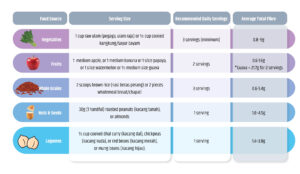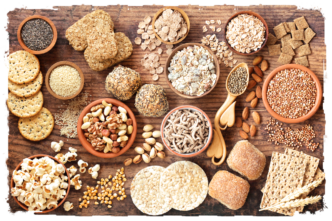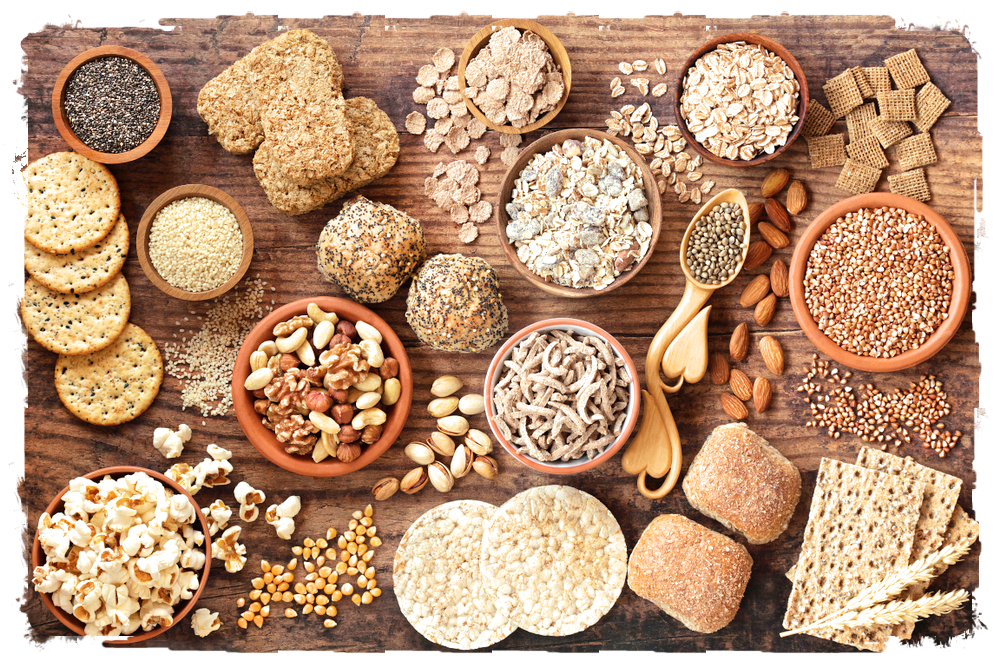WORDS PUTERI IYLIA ASILAH SHAHRIL AND PROFESSOR DATO’ DR ROSLEE RAJIKAN
 FEATURED EXPERT FEATURED EXPERTPUTERI IYLIA ASILAH SHAHRIL BSc (Hons) in Nutrition (MSU) Master’s Student in Clinical Nutrition Universiti Kebangsaan Malaysia (UKM) |
 FEATURED EXPERT FEATURED EXPERTPROFESSOR DATO’ DR ROSLEE RAJIKAN Professor in Clinical Nutrition and Dietetics Center for Healthy Aging and Wellness (HCARE) Faculty of Health Sciences Universiti Kebangsaan Malaysia (UKM) |
DIABETES AT A GLANCE
- Uncontrolled blood sugar happens when the body struggles to manage glucose, often leading to type 2 diabetes.
- This condition occurs when the body doesn’t respond well to insulin, a hormone that helps move sugar from the blood into cells for energy.
- As a result, sugar builds up in the blood.
- Eating too many simple carbs like bread, rice, and sugary foods can worsen the problem, causing blood sugar spikes and putting more strain on the body. Over time, this can lead to insulin resistance and diabetes.
THE POWER OF FIBRE
In today’s world, managing blood sugar isn’t just for those with diabetes—it’s something that affects us all.
While many turn to medication or restrictive diets to control blood sugar levels, there’s a simple and natural solution often overlooked: fibre.
- Fibre is a vital component of a healthy diet.
- Increasing your fibre intake doesn’t have to be complicated or costly.
- Adding more fibre to your diet can be an easy, cost-effective way to keep your blood sugar stable, boost your energy, and improve your overall health.
| The World Health Organization (WHO) and Food and Agriculture Organization (FAO) recommend consuming at least 25g of dietary fibre daily. |
A CLOSER LOOK AT DIETARY FIBRE
- Fibre is a type of carbohydrate that your body cannot digest.
- It helps the intestinal tract function optimally and contributes to the body’s detoxification.
Fibre Comes in Two Main Forms
Soluble fibre
- Dissolves in water, helping to control blood sugar and lower cholesterol.
- Found in psyllium, oats, legumes, and fruits like apples.
Insoluble fibre
- Adds bulk to your stool, promoting regular bowel movements.
- Found in vegetables, wheat, whole grains, and nuts.
Proven Benefits of Fibre
- Studies found that adding more fibre to your diet can help control blood sugar levels.
- It also improves heart health by lowering cholesterol and supporting healthy body weight.
- Other studies show that eating more fibre can help you live longer and lower your risk of major health problems. Insoluble fibre from whole grains and vegetables is especially effective in reducing the risk of death from heart disease, cancer, and other causes. Additionally, fibre from nuts and seeds can lower the risk of dying from heart disease by 43%.
HOW FIBRE WORKS TO CONTROL BLOOD SUGAR
Fibre plays an important role in keeping blood sugar levels steady, especially for people with diabetes.
Soluble Fibre Slows Down Digestion
- Soluble fibre turns into a gel-like substance in the stomach.
- This substance slows down how quickly sugar is absorbed into the bloodstream, which helps keep blood sugar levels from spiking too quickly.
Insoluble Fibre Absorbs Some of the Sugars We Eat
- Insoluble fibre helps absorb some of the sugar in the food you eat and stops certain enzymes from breaking down carbohydrates.
- This means smaller amounts of sugar enters your bloodstream.
Produces Helpful Fatty Acids
- When the fibre you eat is broken down by the good bacteria in your gut, it produces substances called short-chain fatty acids (SCFAs).
- These fatty acids help your body use insulin better, which improves how your body manages blood sugar.
HOWEVER, WE ARE NOT EATING ENOUGH FIBRE!
- According to the 2023 data from our National Health and Morbidity Survey, 95% of Malaysian adults do not meet the recommended daily intake of consuming 2 servings of fruit and 3 servings of vegetables per day.
- An average Malaysian adult only managed to consume only 2 servings of fruits and/or vegetables per day.
- This deficiency can lead to health issues like constipation, weight gain, and poor blood sugar control.
UNDERSTANDING THE “2 SERVINGS OF FRUIT AND 3 SERVINGS OF VEGETABLES” GOLDEN RULE
To understand how much fibre you’re getting from different foods, it’s important to look at the fibre content in common food sources and how they contribute to your daily intake when consumed in recommended servings.
For example, certain fruits like guava offer a significant amount of fibre, with a serving of guava providing 10.8g, which is a notable contribution to your daily fibre needs.
Below is a breakdown of the fibre content in various food groups.

PRACTICAL TIPS TO OPTIMIZE YOUR FIBRE INTAKE
#1 Start with What You Like
- Start with fibre-rich foods you already enjoy, such as your favourite fruits, vegetables, or a handful of nuts.
- For instance, you might begin with a juicy apple as a snack, a serving of carrots with your lunch, or a sprinkle of chia seeds over your breakfast yogurt.
#2 Diversify Your Sources
- Once you’re comfortable with your diet, gradually spice things up by adding or replacing new foods like whole grains, legumes, and leafy greens.
- Trying different options not only keeps your meals far from boring but also ensures you get a variety of fibres.
- This variety will keep your meals exciting, nourish your body, and support your long-term health!
#3 Opt for Healthy Cooking Methods
- Choose healthy cooking methods like steaming, grilling, or making clear soups to prepare your meals.
- You can also enjoy raw vegetables, such as ulam, but be sure to wash them thoroughly.
- Avoid or limit frying or using coconut milk, as these methods can add unnecessary calories and reduce the health benefits of your food.
#4 Go Local and Seasonal
- One of the easiest ways to eat healthy without breaking the bank is to choose seasonal and locally available fruits and vegetables.
- These foods are often fresher, tastier, and more affordable than imported options.
- For example, in Malaysia, locally grown produce like papaya, bananas, and ulam are not only budget-friendly but also packed with nutrients and fibre.
#5 Take It Gradually
- If you’re not used to eating fibre-rich foods, it’s important to increase your intake slowly.
- Gradually build up over a few weeks to give your body time to adjust.
- Jumping straight into a high-fibre diet can overwhelm your digestive system, potentially causing discomfort like bloating, gas, or stomach cramps.
#6 Stay Hydrated
- Drink plenty of water increasing your fibre intake.
- This is because fibre absorbs water as it moves through your digestive system, to help to keep things running smoothly.
- Without enough water, fibre can lead to constipation or discomfort.
- Increasing your water intake helps prevent dehydration and allows fibre to do its job effectively.
#7 Pair Fibre with Probiotics
- Probiotics, often called “good bacteria,” help your gut make the most of the fibre you eat.
- When fibre reaches your gut, probiotics help break it down, turning it into helpful substances.
- Foods like yogurt, kefir, kombucha, miso soup, tapai, kimchi, idli, tempe and other fermented options are rich in probiotics and pair wonderfully with fibre-rich foods.
CAUTION: SOME CONSIDERATIONS WHEN UPPING YOUR FIBRE INTAKE
#1 Don’t Go Overboard!
- While fibre has many benefits, you should consume it mindfully as too much fibre intake can lead to digestive symptoms such as flatulence, bloating, abdominal cramps or intestinal obstruction—especially if you do not consume enough fluids!
- Excessive fibre consumption also can affect the absorption of essential minerals from food such as iron, zinc or calcium.
#2 Note for People Living with Certain Health Conditions
- For those with certain health conditions, such as Crohn’s disease, fibre intake should be limited and under medical supervision.
- Patients who suffer from malabsorption should take fibre with caution.
- Patients who have just undergone bowel surgery is also recommended to take fibre carefully. If you have irritable bowel syndrome (IBS), focus on soluble fibre.
- A good rule of thumb is to always check with your doctor before making changes to your diet.
CONCLUSION
- Dietary fibre is as a simple, affordable, and effective way to improve health.
- Add more fibre to your diet to help control blood sugar, support digestion, and lower the risk of chronic illnesses.
- Start small with a piece of fruit or a bowl of oatmeal and gradually include a variety of fibre-rich foods to keep meals nutritious and enjoyable.
- Pair fibre with plenty of water and a balanced diet for the best results.














